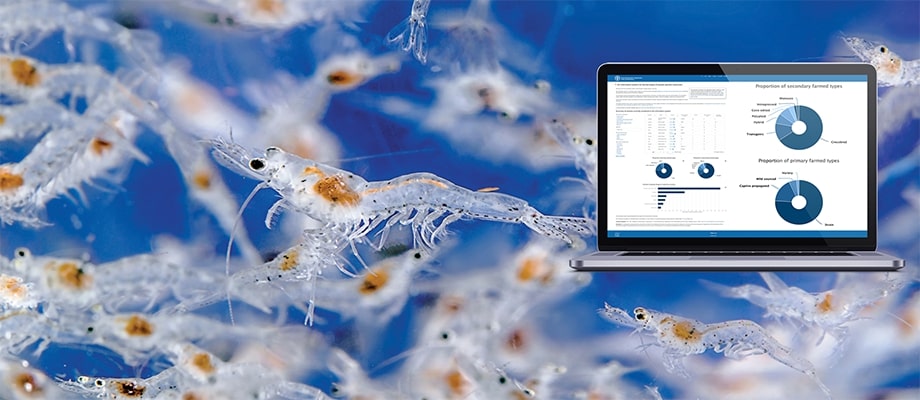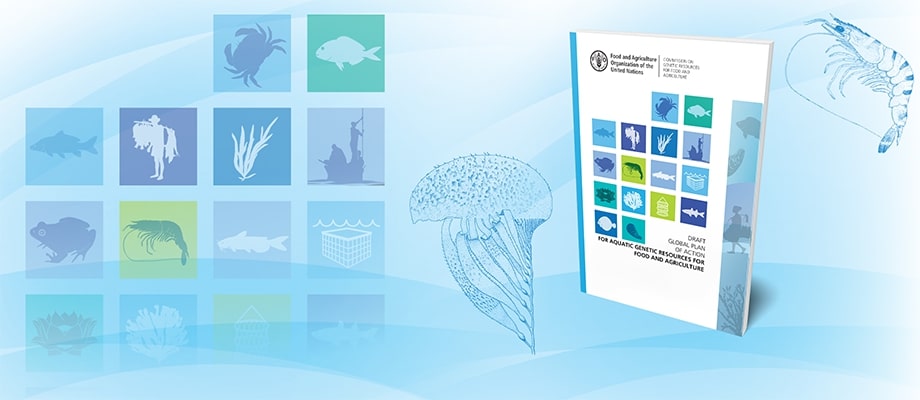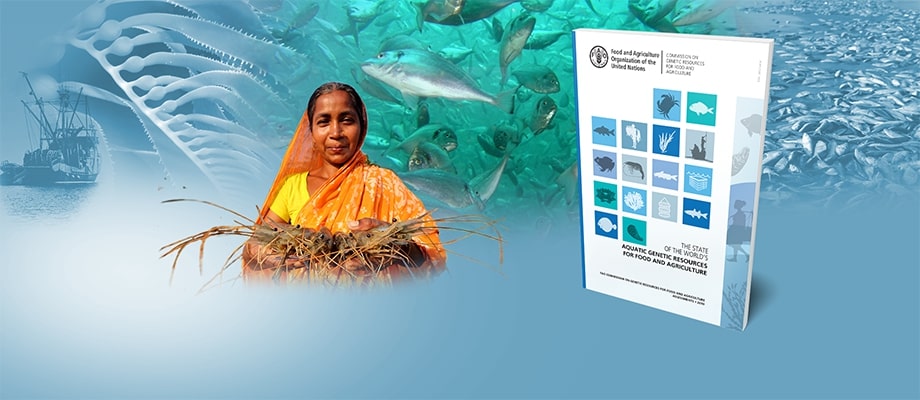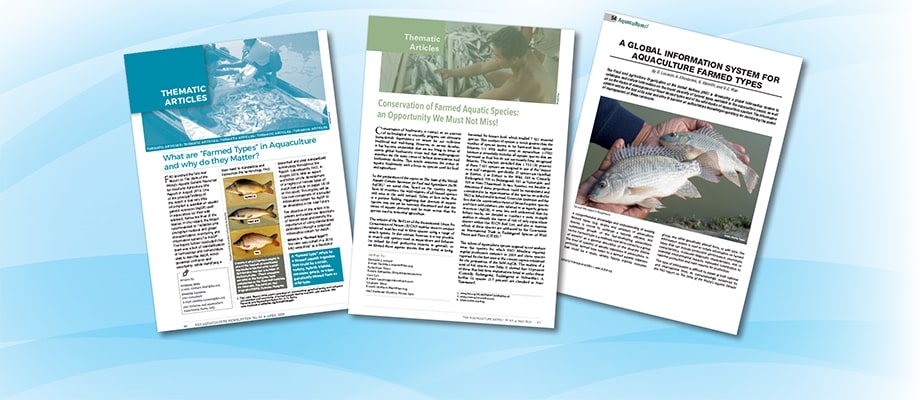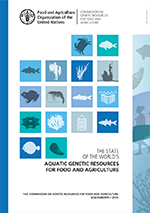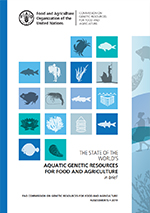Aquatic biodiversity used for food and agriculture underpins production in both capture fisheries and aquaculture. It is the basis on which the two sectors will be able to exist and grow sustainably and its effective management is essential to secure future supply of aquatic food. This diversity allows organisms to reproduce and grow, adapt to natural and human-induced impacts such as climate change, resist diseases and parasites, and continue to evolve. The diversity of the aquatic genetic resources that we exploit determines the adaptability and resilience of species to changing environments and contributes to the wide variety of shapes, colours and other characteristics of aquatic species. Genetic diversity is also the foundation for genetic improvement for aquaculture.
Aquatic genetic resources (AqGR) include DNA, genes, chromosomes, tissues, gametes, embryos and other early life history stages, individuals, farmed types, stocks, and communities of organisms of actual or potential value for food and agriculture.
Breeds and varieties of species used in terrestrial agriculture have been developed over millennia. We farm nearly 700 species in aquaculture and harvest approximately 1 800 species in capture fisheries. However, there are relatively few distinct strains or varieties of aquatic species in aquaculture and there is a paucity of information on the genetic diversity of these species in the wild or under domestication.
FAO, through the Fisheries and Aquaculture Division and the Commission on Genetic Resources for Food and Agriculture, has a mandate to halt the loss of genetic resources and to ensure food security and sustainable development of AqGR including fair and equitable access and benefit sharing.

